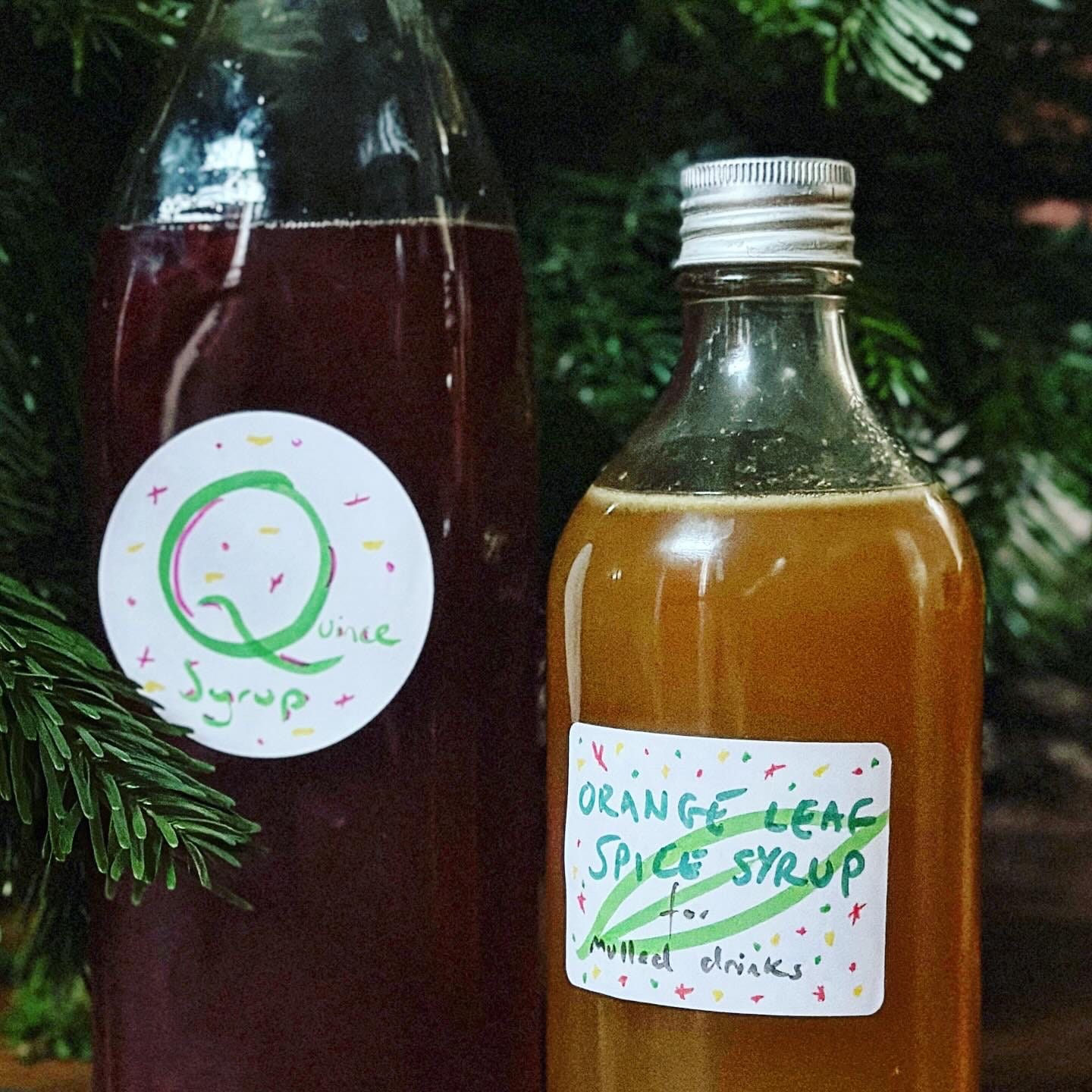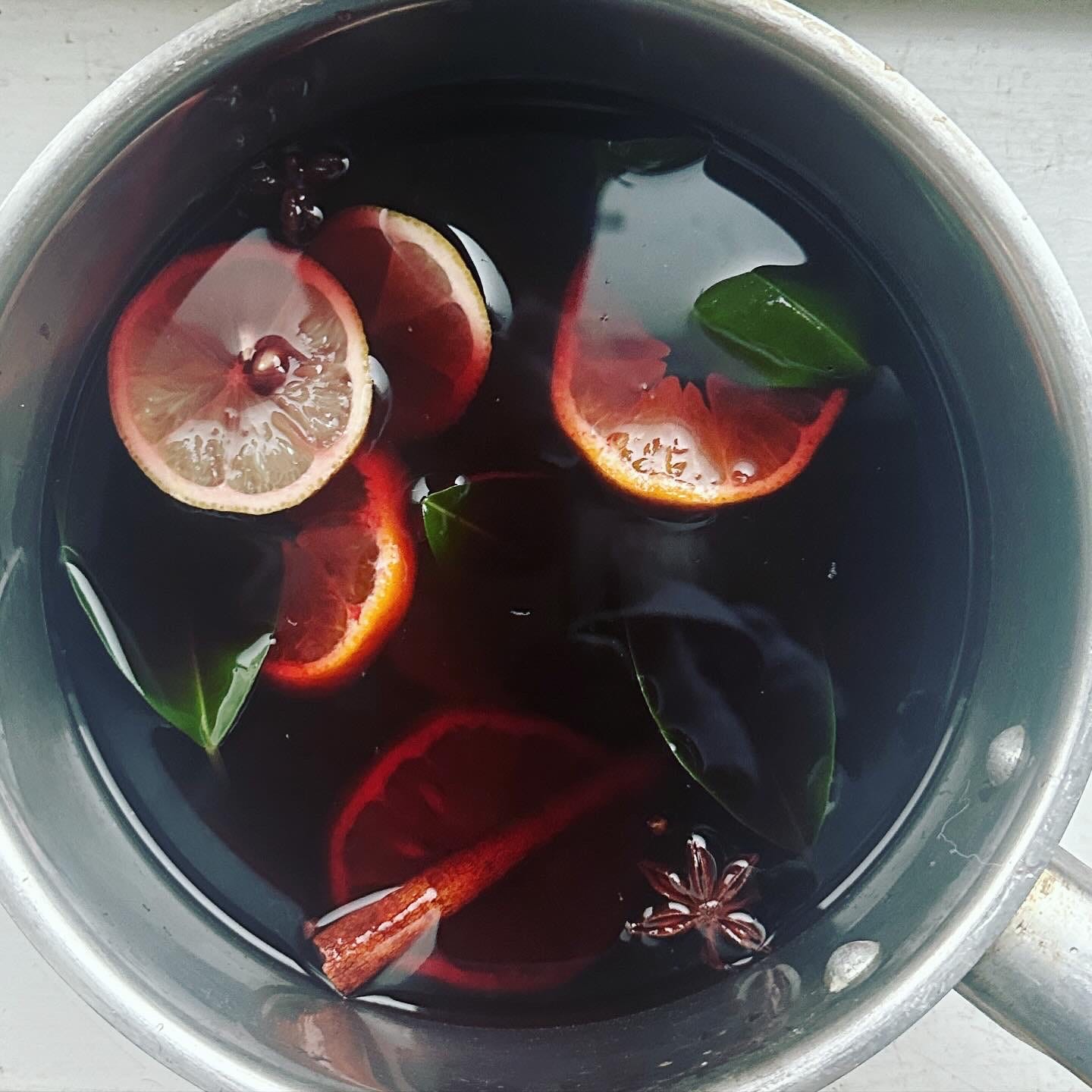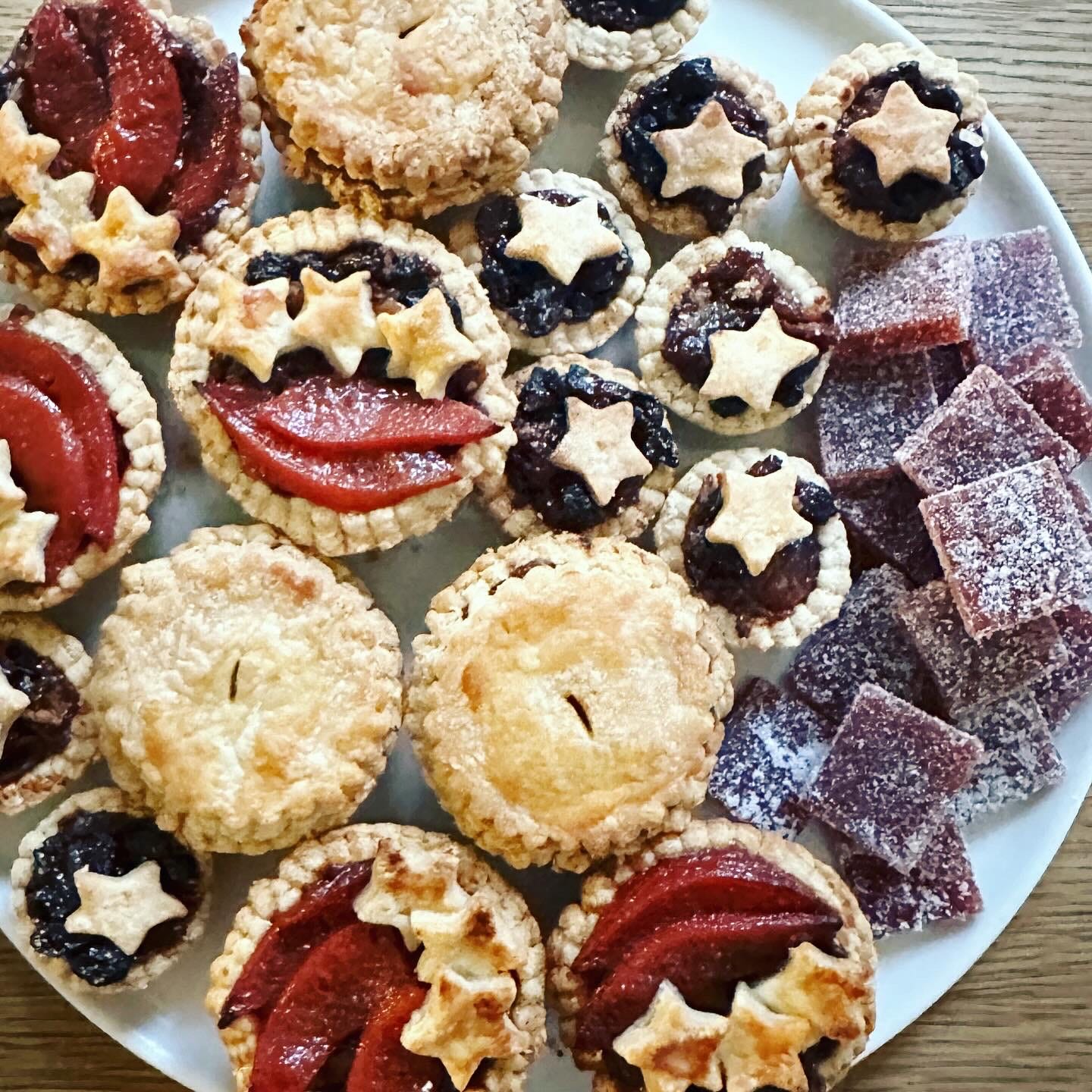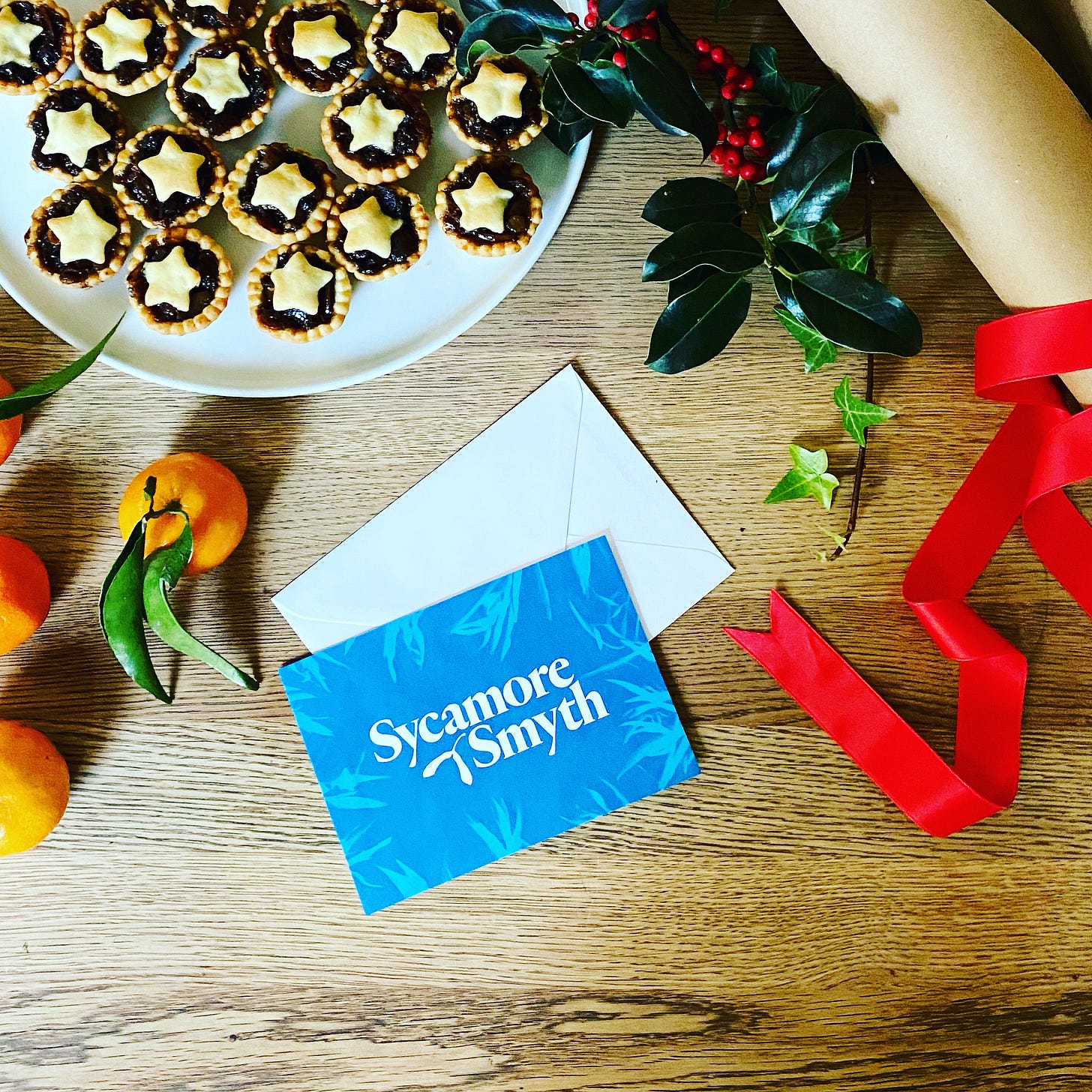In Good Taste #28: Mulled Wine two ways plus Quince Candies
There's quince in the wine too - I just can't stop myself; plus roast potato tips; and heartfelt thanks
Well, hello there! How are you?
Good I hope. Thank you so much for being here.
I know I start each week like that but I really do mean it. And, as 2023 draws to a close, I want to reiterate how grateful I am for everyone who reads this newsletter and for all the lovely things you’ve said about it. Also for the typo corrections and suggestions of where else it can improve! Keep them coming…
(Not up for the chitchat? Completely get it. Click the email title to go to a web-based version then jump straight to the recipes.)
This is going to be my last missive before Christmas but I’ll be back on 11th January with more food and ferments. My plans for 2024 include explorations of kombucha and kefir, as well as some kit round ups. Plus - of course - plenty of veg-based lacto-ferments (including my “famous” chilli sauce!) and ways to cook and eat with them.
I’ll also be announcing some more ticketed classes and launching a package for businesses. So stick with me.
In the meantime we’re keeping it festive with (non-fermented) mulled drinks, including a way to use the syrup from last week’s poached quinces. And also a quick homemade gift idea if you’ve got any of the fruit itself left.
I also wrote a piece for the Express and Mirror a couple of weeks back, explaining how eating fermented food can aid your digestion in the run up to Christmas. I don’t think it’s on either paper’s website but you can see it here. I’ve put together a little survival kit containing some sauerkraut and kefir grains so I know I can get my fix during our various festive visitings.
Before we get into the mulling, I just want to give you my best tip for Christmas dinner. You know anyway that it’s less stressful to do the prep the day before. Get all the parboiling and peeling done on Christmas Eve and everything seems less overwhelming on the day itself. But it leads to better potatoes too. Science fact!
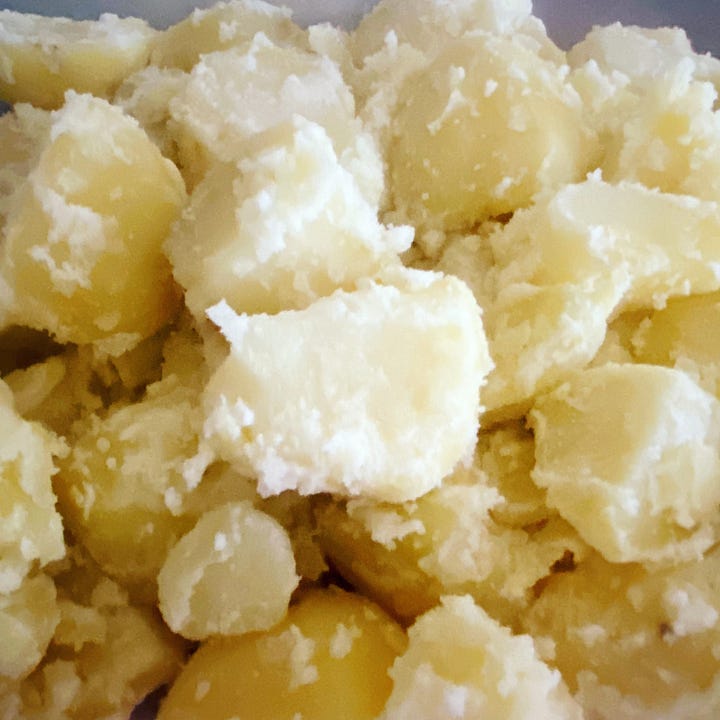
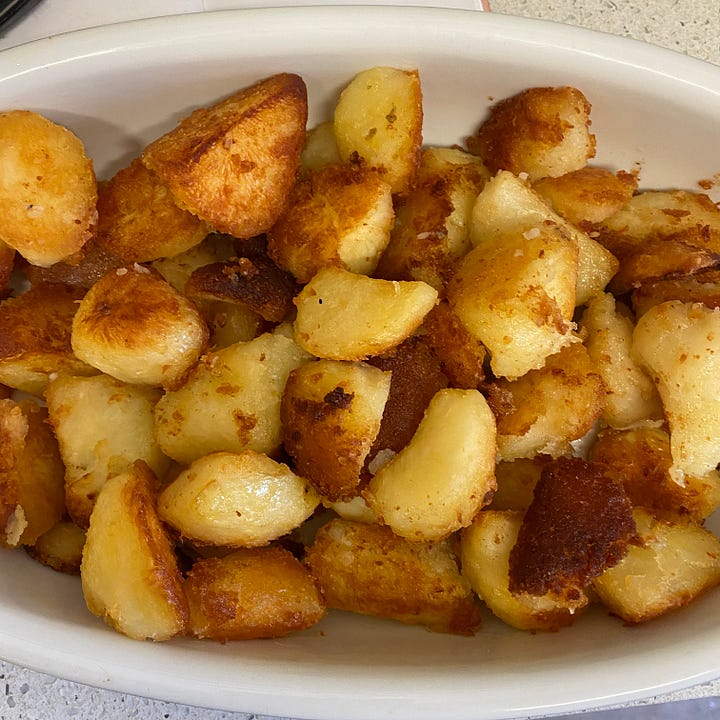
Parboil your potatoes the day before you want to roast them and give them a good shake to fluff up the edges. Then let them steam dry and keep them uncovered in the fridge overnight. The cooking lets the starches soften and expand and then letting them dry and cool recrystallises that starch. “Dehydrated gelatinised starch” sounds distinctly un-delicious but it’s the key to crisp roasties.
I discovered this by accident but it’s backed up by no less and authority than Kenji Lopez-Alt.
Happy Christmas!
Mulled Drinks
People have been drinking referring to hot, spiced wine since at least Roman times and referring to these drinks as being “mulled” since the 17th century (according to the Oxford Companion to Sugar and Sweets) but the origin of the term is obscure.
German glühwein and Scandinavian glögg both translate literally as “glowing hot wine”. Which sounds kind of cool but also scary. Apparently the wine was sometimes warmed by the plunging in of a red-got poker. Also cool and scary.
I love mulled wine and the ordering of a glass in a woody pub after a brisk wintry walk is one of my favourite signifiers that Christmas is coming. However, the quality of pub mulled wine, served out of those giant thermal barrels, is usually pretty disappointing.
They’re often overstewed and oversweet, one’s teeth immediately furry from the sugar and tannins. I think we can do better…
(Apologies for the terrible quality of photos in this last email of the year. The light has been so poor my kitchen has been ina constant twilight.)
Recipe: Spiced Syrup for Mulled Drinks
The first time I head about making a syrup for mulled drinks I wasn’t sold. I was perfectly happy just bunging everything in a pan and warming it through. But it definitely makes a difference.
Since you have already infused the flavour of the spices into the syrup, you only need to warm the wine through rather than cook it for long enough to get those flavours out. This means that the alcohol in the wine doesn’t all boil off. I know lots of people like to remedy this by adding a slug of brandy before serving but I find this option leads to too many strong tastes competing for attention.
Also, you don’t get that stewed taste so you can actually taste the wine. It’s a slightly lighter, less overpowering experience so you can have more than one glass. Yes, you need to make sure you’re using passable wine in the first place I suppose, but mulling total plonk is always a bust anyway.
It’s also handy as you can make one big batch of syrup and use it for red, white, cider or fruit juice.
Ingredients
500g sugar
1 litre water
1 orange
1 lemon
2 cinnamon sticks
6 star anise
1 tbsp cloves
1 tbsp black peppercorns
1 tbsp coriander seeds
4 or so orange leaves
Method
Put the sugar into a pan with the water.
Carefully peel strips of zest off the orange and lemon with a vegetable peeler. Then halve and juice the fruit. Add juice and zest to the sugar along with the spices and orange leaves.
Heat gently, stirring occasionally, until the sugar is dissolved. Then increase the heat and simmer for 20 mins or so until it reaches syrupy consistency.
Allow to cool then strain out the spices and zest and discard.
The syrup will keep in a bottle or jug in the fridge for at least a couple of weeks. Alternatively, reheat the strained syrup and pour into sterilised bottles to give as gifts.
Notes (If Ifs And Ands Were Pots And Pans…)
I got the idea of using orange leaves in mulled wine from James Wong and they definitley bring and extra subtle something. I have a tiny orange tree that is hanging on in there despite attacks by both mealybugs and vine weevils this year. If you don’t have access to a tree then try with the leaves attached to clementines. Give them a wash first though. Or make it without. It will still be nice.
The peppercorns and coriander seeds are a relatively recent addition for me, but I like them. Extra heat from the pepper and a citrus lightness from the coriander. But use whatever spices you like.
Recipe: Mulled Wine
Ingredients
1 bottle red wine
100-200ml mulling syrup (see recipe above)
1 lemon, sliced
1 orange, sliced
4 or so orange leaves
Method
Put the wine in a pan with 100ml of the syrup, the sliced fruit and the orange leaves. Heat gently until just warm then taste. Add more syrup as you like. I used about 150ml.
Keep the wine on a gentle heat for about five minutes to give the leaves a little time to infuse and the alcohol to mellow slightly then serve. Don’t let it sit there and stew for ages though. The whole point of making the syrup is that you can serve the wine whilst it still has some alcohol content and freshness to it.
Notes (If Ifs And Ands Were Pots And Pans…)
Use a full-bodied red. The short heating time means it won’t become overwhelming.
The syrup works beautifully with white wine, cider or apple juice too.
Recipe: Mulled White Wine with Quince Syrup
I love traditional red mulled wine but it’s undeniably heavy. The syrup above works well with white wine too but here’s a fruitier alternative. If you poached some quinces last week, this is a nice way to use the syrup.
The best wine to use is something dry and full-bodied. It’s not a place to use something totally undrinkable but equally don’t go overboard. The better end of supermarket plonk is fine.
If, however, you prefer your white wines cold and sparkling, that quince syrup would make a beautiful Bellini
Ingredients
1 bottle white wine
300-500ml (approx) quince syrup
2 star anise
1 cinnamon stick
1 lemon, sliced
Method
Pour the wine into a saucepan and add 300ml quince syrup. Taste for sweetness and add more as you like. I used 400ml.
Add the spices and lemon and heat gently. Let sit over a low heat for 5 mins or so until the flavours meld.
Recipe: Quince jelly candies
These are basically like membrillo but cut into cubes and sugared. You can eat them with cheese and fruit or I think they’re nice things to have around for when people want a little sweet treat in the days surrounding Christmas but don’t want to go all in on a mice pie. Good for gifts too if you need to fling something together before Monday. This is a scalable recipe so make as much as you like.
I packed mine up as presents and sent them off, forgetting to take a nice photo of them in their gift boxes beforehand. But here they are alongside last week’s mince and quince pies.
Ingredients
poached quinces
sugar
1 lemon, juiced
Method
Line a baking tray with greaseproof paper.
Weigh your quinces
Transfer them to a food processor and blitz until completely smooth.
Put the quince purée in a pan and add three quarters of the weight of the quinces in sugar (see note) and the lemon juice. Stir to combine and heat gently until all the sugar has dissolved.
Raise the heat to medium-high and cook until the purée has thickened so you can make a clean spoon line on the bottom of the pan. I always think of this as “the parting of the Red Sea”.
Pour into the lined tray and place spread out evenly. Be careful. It will be really hot and sticky and you don’t want sugar burns for Christmas. Put another piece of greasproof paper on top, gently pat it down and then leave in place so you get a nice smooth top.
Allow to cool completely. It should set into a soft, pasty jelly. Then peel off the top layer of paper and turn out onto a chopping board. Peel off the lining paper and slice the jelly into whatever shapes you like. Toss with sugar and keep in an airtight container.
Notes (If Ifs And Ands Were Pots And Pans…)
Most recipes will tell you to weigh the fruit and add an equal weight of sugar. This is true for quinces that were just cooked in water but ours were poached in syrup so the full amount of sugar isn’t necessary to get a good set.
The shapes and the sugar you use for coating is totally up to you. My dad’s old girlfriend was German and always used to have these at Christmas. They were cut into diamond shapes and coated in quite coarse granular sugar which gave the outside a nice crunch. I’ve gone caster here as it was just what I had.
Vouchers
OK. Last time I promise! In need of presents you don’t have to go to the shop for? How about a lovely Sycamore Smyth voucher?
I’ve got private fermenting workshops, pasta classes or freezer filling.
If you order one you’ll get a gift card via email that you can forward to print out for the recipient. Easy!
No Cultural Fun this week but I’ve got loads of recommendations I want to share in the new year. See you in 2024!
Bye! See you soon!
In the meantime, if you felt like sharing In Good Taste with friends or family who might enjoy it, you can do so with the button below. It would mean the world to me. Thanks so much.
In Good Taste is a Sycamore Smyth newsletter by me, Clare Heal.
You can also find me on Instagram or visit my website to find information about my catering work, cookery lessons and upcoming events.





